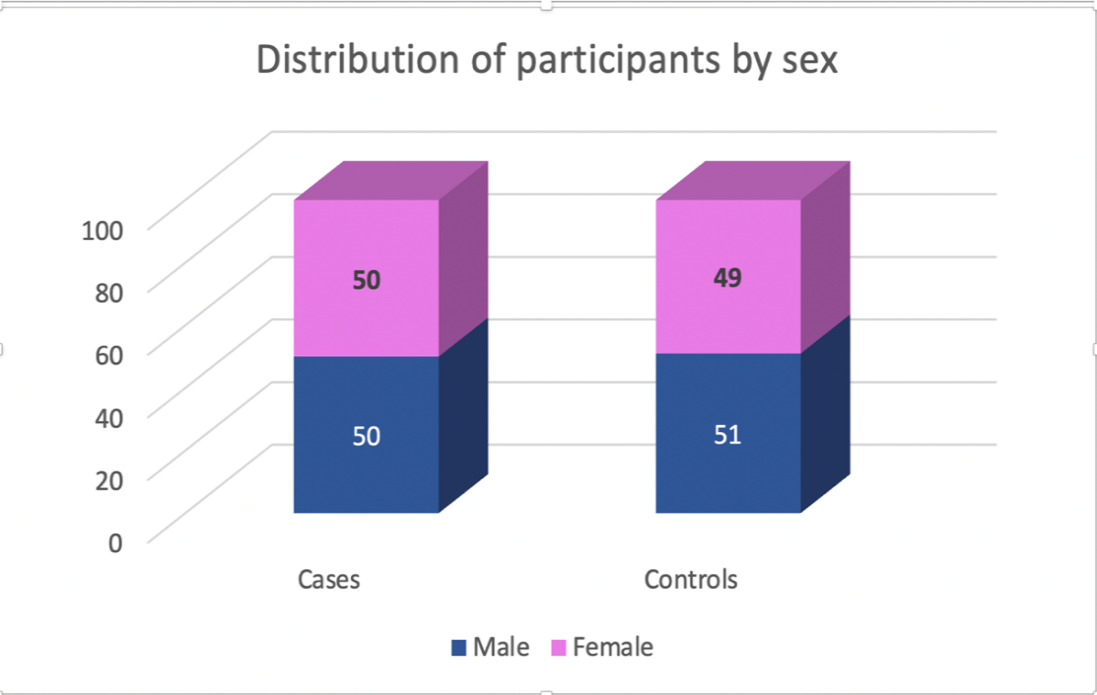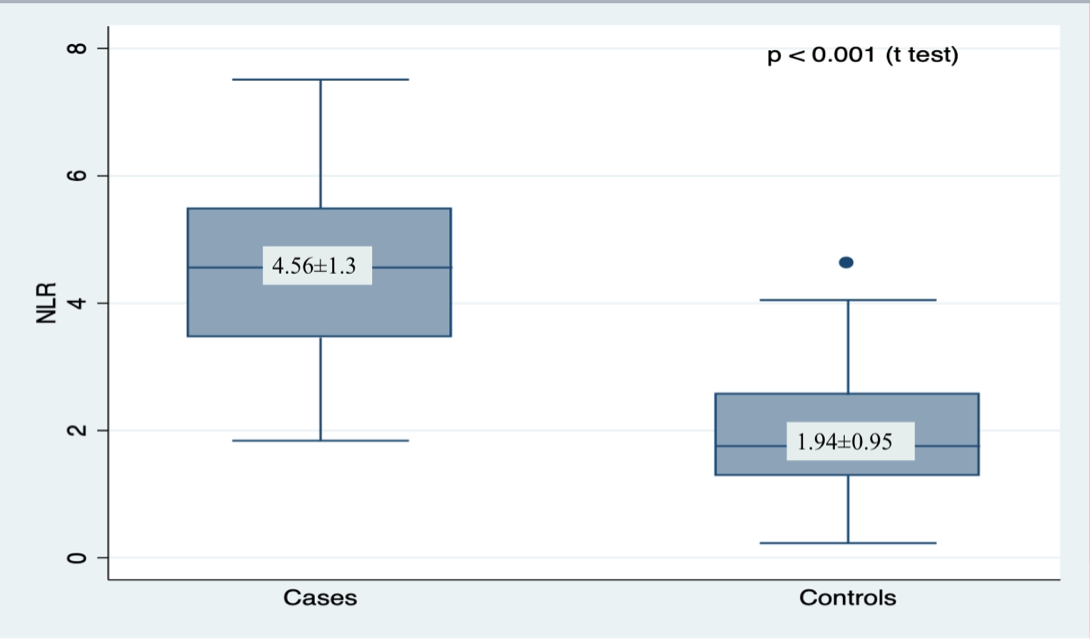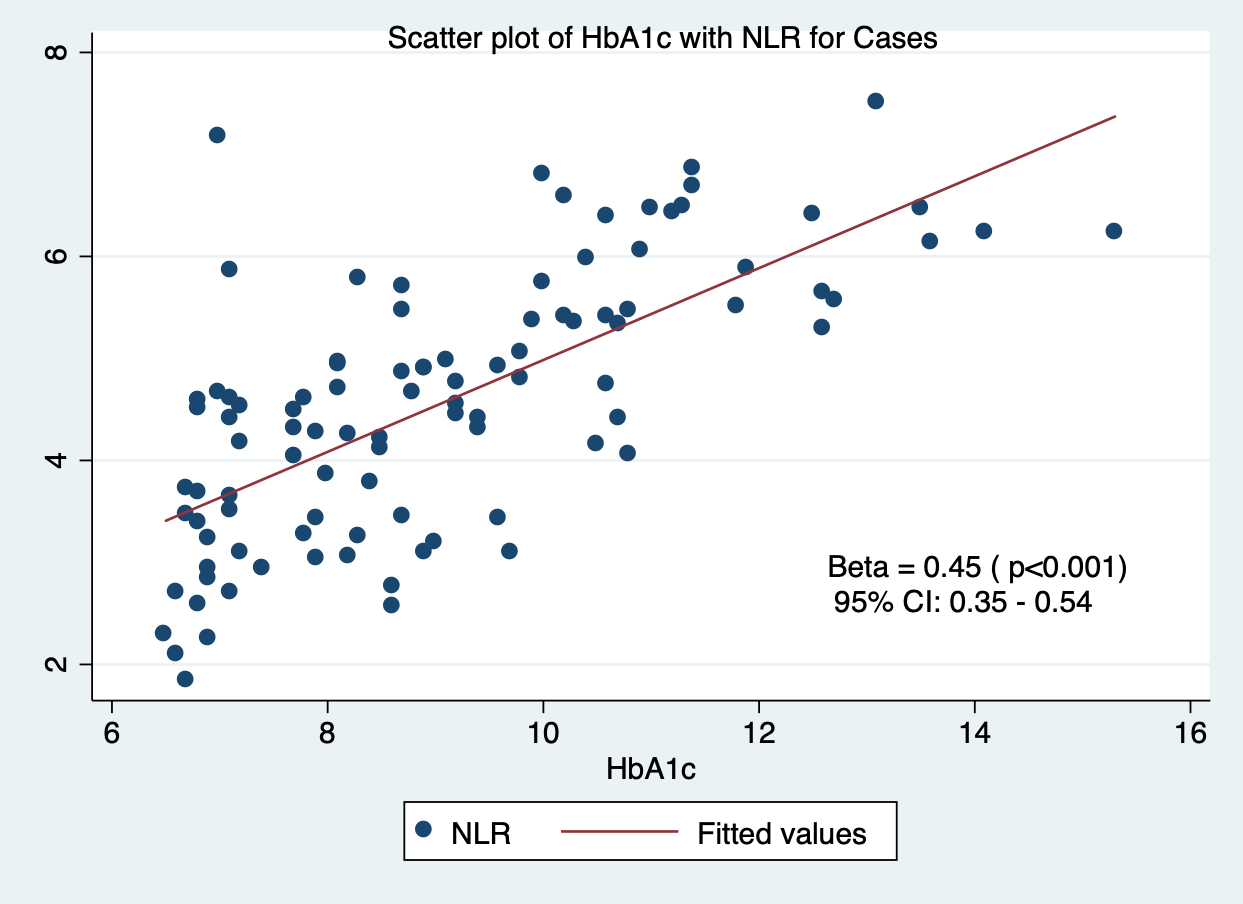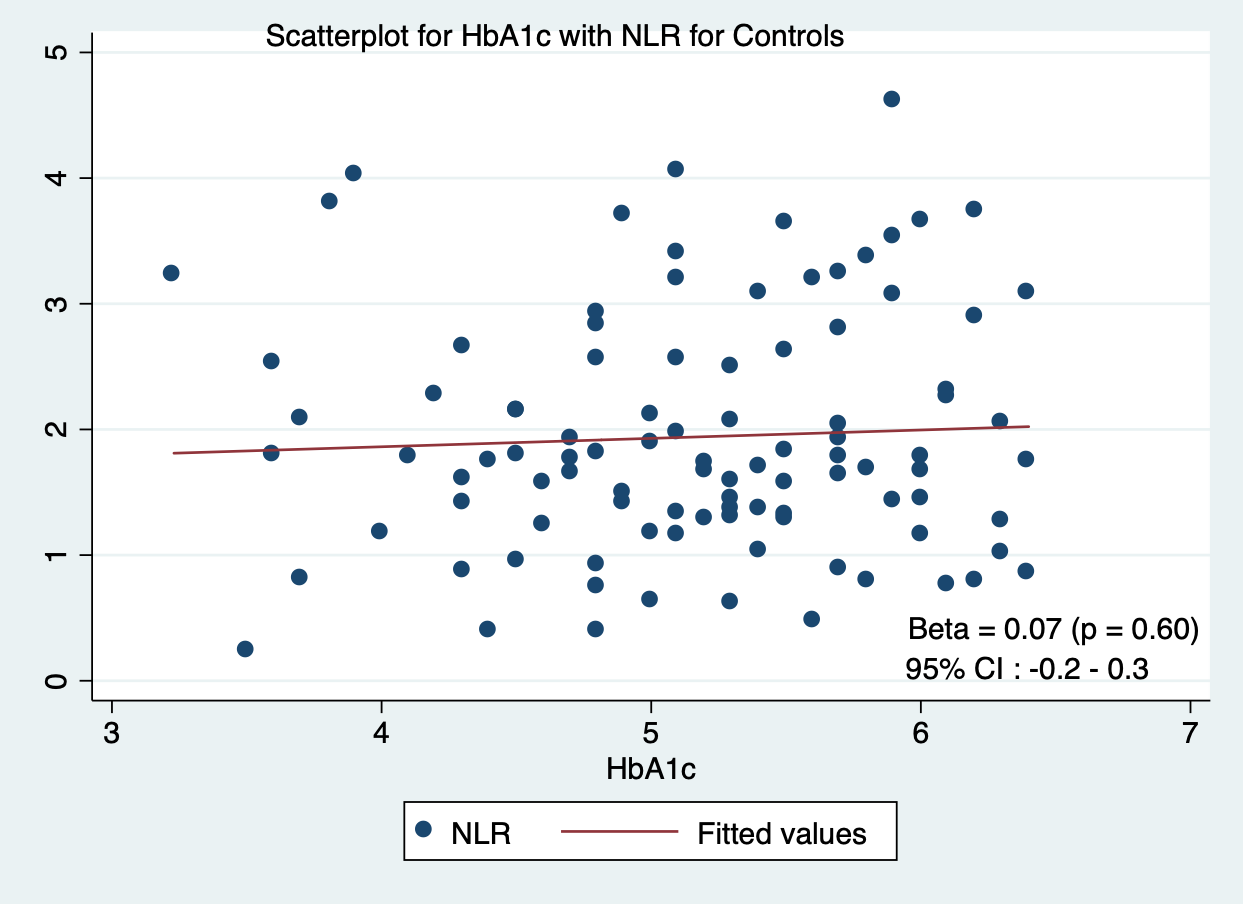Introduction
Diabetes mellitus is a metabolic condition characterized by impaired glucose tolerance and peripheral insulin resistance. It is one of the major causes of increased mortality and morbidity with microvascular and macrovascular complications.1 According to the International Diabetes Federation in 2019, the worldwide prevalence of diabetes mellitus has increased drastically from 30 million cases in 1985 to 463 million in 2019. 1 in 11 adults aged 20-79 years is having diabetes. According to the latest study, it is also estimated that there will be around 642 million cases of diabetes by the year 2040.2, 3 Systemic inflammation plays a vital role in insulin resistance and type 2 diabetes mellitus.4 Several studies have been done that suggest that levels of various inflammatory markers are raised in diabetes mellitus and are associated with an increased risk of cardiovascular disease and complications.5, 6, 7 Neutrophil to lymphocyte ratio (NLR) is a hemogram-derived simple marker that can be used to assess underlying inflammation and diabetic control levels.8, 9 We compared NLR and Glycated hemoglobin A (HbA1c) levels in diabetic patients and healthy controls to establish a possible correlation between NLR and HbA1c levels.
Materials and Methods
This was a case-control study, including 100 cases of type 2 diabetes mellitus and similar age & sex-matched healthy controls. Consent was obtained from each participant of the study. Cases of type 2 diabetes mellitus aged between 18 to 60 years were taken based on the American Diabetes Association (ADA) 2020 criteria.10 Any cases with active or chronic disease, history of recent infections, type 2 diabetes mellitus patients taking treatment, and patients of type 1 diabetes mellitus were excluded from the study. 2 ml of venous blood was taken in a sterile vial containing anticoagulant Ethylenediaminetetraacetic acid. The sample was run on a 5-part differential counter analyzer. A differential count was obtained and NLR was calculated by dividing absolute neutrophil count by absolute lymphocyte count. The samples were also run on a Hemo one machine for HbA1c estimation. Statistical analysis was done by using the Statistical Package for the Social Sciences licensed version 21.0. After calculating the mean and standard deviation (SD), a paired t-test was applied for quantitative data. A p-value ≤ 0.05 was considered statistically significant.
Results
In this study, 100 type 2 diabetes mellitus patients (50.0%) were taken as cases and 100 (50.0%) healthy individuals were taken as controls. The mean (SD) of age (years) in the cases was 46.45 (8.01) and in the controls was 45.6 (8.05). The age (years) in the cases ranged from 30 to 60 and in the controls ranged from 31 to 60 (Table 1). 50% of the participants in the cases were males and 50% were females in the cases group. 51% were male and 49% were females in the control group (Figure 1). Cases and controls were age and sex-matched. No significant difference was seen among the cases and control groups in terms of age and sex (p > 0.05).
The mean (SD) value of NLR in the cases group was 4.56 (1.3) and in the control was 1.94 (0.95). The distribution of NLR in the cases and controls is depicted by the Box-and-Whisker plot. The upper and lower extent of the whiskers represent the Tukey limits for NLR in each of the groups while the upper and lower boundaries of the box represent the 75th and the 25th centile of NLR respectively and the middle horizontal line represents the median NLR (Figure 2). Results were calculated using a t-test, the mean NLR in patients with type 2 diabetes mellitus was compared with the mean NLR of healthy controls and found to be significantly elevated (p<0.001).
The correlation between NLR and HbA1c is depicted by scatterplot. The red line shows the general trend of correlation between the two variables and individual points represent individual cases. We found a significant positive correlation between NLR and HbA1c levels in type 2 diabetes mellitus patients (p-value ≤ 0.05) (Figure 3), while no correlation was seen between NLR and HbA1c levels in healthy controls (Figure 4).
Discussion
The present study showed that the value of NLR is higher in cases of type 2 diabetic patients when compared to healthy controls. Also, NLR values are positively correlated with HbA1c values. It suggested a possible role of NLR as a novel marker in measuring diabetic control levels. Sefil F et al.11 conducted a retrospective study and found that white blood cell counts, neutrophils, and fasting serum glucose were significantly higher in the diabetic group. Also, a positive correlation was observed between NLR and HbA1c. Similarly, in a study conducted by Duman TT et al.,12 higher values of NLR were suggestive of diabetic control levels in type 2 diabetes mellitus cases. It was also found that NLR was positively correlated with fasting glucose levels and HbA1c. Various studies have already suggested a crucial role of inflammation in the pathogenesis of diabetes mellitus and metabolic syndrome. 13, 14, 15, 16, 17 Umarani et al. studied the relationship between NLR with different levels of glucose intolerance. It was found that NLR was increased in cases of complicated diabetes mellitus as compared to the cases with diabetes mellitus under control. Hence, it was established that NLR can be used as an early prognostic marker in patients with diabetes mellitus for microvascular complications.18 Liu et al. also conducted a study to find an association between NLR and type 2 diabetes mellitus patients with peripheral neuropathy. It was suggested that patients of type 2 diabetes mellitus with higher NLR levels might be more likely to develop peripheral neuropathy complications. 19 Qiao S et al. documented that a higher value of NLR had an independent prognostic role in patients with both type 2 diabetes mellitus and coronary artery diseases. 20
Rahar S et al. revealed higher NLR in cases of diabetic patients when compared to controls. A significantly higher value of NLR was found in cases of diabetic nephropathy as compared to the diabetic cases with normal renal function group and control group.21 Researchers have also found significantly increased NLR value and platelet-to-lymphocyte ratio in diabetic nephropathy cases. Their role as a prognostic and predictor marker in cases of diabetic nephropathy was suggested.22 In a retrospective study, a higher NLR value in cases of uncontrolled type 2 diabetes mellitus was found as compared to cases of controlled type 2 diabetes mellitus, but it was statistically insignificant.23
Conclusion
There is very limited literature available regarding the correlation of NLR with HbA1c levels in patients with type 2 diabetes mellitus. Elevated value of NLR in healthy individuals may be indicative of underlying chronic low-grade inflammation and impaired glucose metabolism. NLR is a simple parameter that can be used as a valuable tool to monitor diabetic control levels along with HbA1c in type 2 diabetic subjects. Underlying inflammation can also be assessed at the subliminal stage, hence, morbidity and mortality related to microvascular and macrovascular complications can be reduced with an early intervention.










